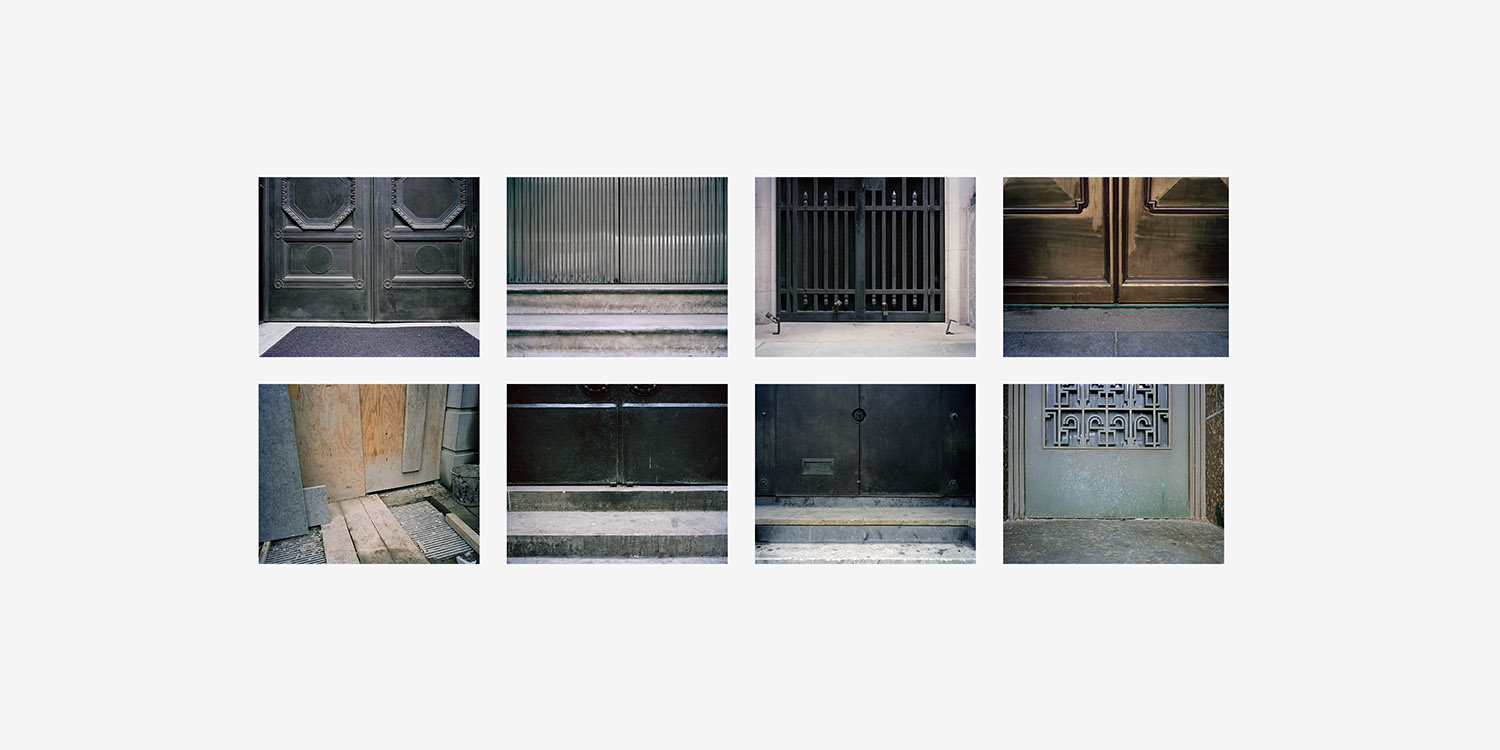© XAVIER RIBAS - Thresholds (2002) 8 C-Type prints size 50 x 60 cm. Edition of 6

[En] In 1924 Walter Benjamin and Asja Lacis travelled together to the city of Naples. During their stay they wrote a wonderful meditation on the notion of ‘porosity’ they perceived not only in the geology upon which the city was raised, but also in the city's architecture and street life. Benjamin and Lacis saw the streets of Naples as a public stage inundated by private worlds. They saw the houses in Naples less as “the refuge(s) into which people retreat, than the inexhaustible reservoir(s) from which they flood out”. Living rooms, bedrooms and dining rooms were improvised in the street in a “constellation of unpredictable situations”, and everything in Naples seemed to be in a transitory, inconclusive and fluid state.
The notion of threshold refers to the symbolic and physical delimitation and differentiation of space. The threshold is a space of transition, an ‘in-between’ which, in the disciplines of geography and architecture, is subject to a process of symbolic condensation. The images in this series represent entrance doors of a number of banks and financial institutions in the City of London and Amsterdam. These thresholds seem to associate the nature of the interior space of finance and capital to the sacred and the funerary, a petrified space, while the visible traces of dirt and marks of incidents occurred at the threshold itself, suggests that this space of transition is at the same time a space of inhabitation.
----
[Cast] En 1924 Walter Benjamin y Asja Lacis viajaron juntos a Nápoles y escribieron un precioso texto en el que reflexionaban sobre la imagen de ‘porosidad’ que les sugería no solamente la geología sobre la cual se levanta la ciudad, sino también su arquitectura y sus calles. Benjamin y Lacis vieron las calles de Nápoles como un escenario público inundado de mundos privados: la casa no era tanto el refugio donde la gente se retira, sino el manantial inagotable que les arrastra hacia fuera, configurando un teatro de lo doméstico, con salas de estar, dormitorios y comedores improvisados en las aceras, como una constelación de situaciones imprevisibles. Todo en Nápoles parecía tener un estado de inconclusión, de transitoriedad, o de fluidez.
La noción de umbral hace referencia a la delimitación y diferenciación física y simbólica del espacio. El umbral es un espacio de transición, un "entre-dos" que, en el ámbito de la geografía y de la arquitectura, se presta a un proceso de condensación simbólica. Las imágenes de esta serie representan la parte inferior de las puertas de acceso de bancos y entidades financieras de la City de Londres y Amsterdam. Estos umbrales tienen, curiosamente, la apariencia de panteón o de mausoleo, de espacio sombrío, funerario, religioso, de un espacio petrificado, pero los rastros de suciedad y las marcas de pequeños incidentes ocurridos en el umbral mismo sugieren que este espacio de transición es a la vez un espacio habitado.
© Xavier Ribas (2002)
---

+
Related files
PDF Strange Places, Stanley Picker Gallery, London. Press Release [En]